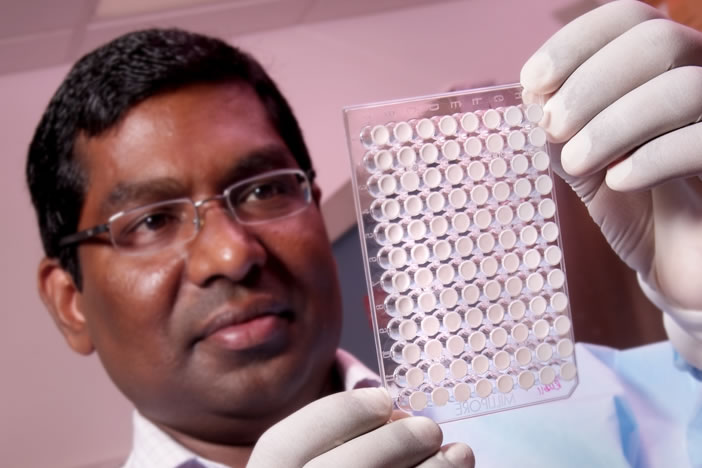Isolated outside its habitat and under the refractive prowess of an electron microscope, HIV has earned grudging respect from the scientists who study it.
HIV consists of just two strands of genetic material together with a small number of enzymes wrapped inside a viral envelope. It measures just 1/10,000th of a millimeter in diameter. The glycoprotein spikes on its outer envelope give the impression that the virus is reaching out to glom on to anything in its path, which is exactly what it is programmed to do. For a retrovirus like HIV to survive, it must get inside host cells and use the machinery of those cells to reproduce.
If nothing else, after three decades of studying HIV, we know that it can perform that task with remarkable efficiency—fusing to lymphocytes and other protective cells in the body, injecting its viral core into them, and assembling thousands of new viral cores that deploy and destroy the human immune system. If HIV is left untreated, infections—even the most common kind—run rampant, wasting, then killing, the body.
Scientists at Emory and elsewhere have designed drugs to help people with HIV live longer. But the quest to eradicate the virus—to come up with a vaccine that renders it harmless—remains a major, and often frustrating, scientific challenge.
Despite a wealth of information about HIV, we still don't know how to develop an effective protective vaccine against it, in part because the outer envelope is able to mutate in ways that are different in each infected person.
"We have made great strides in public health and prevention, in drugs and treatment protocols as well as in vaccine development—all of these being areas where Emory has made major contributions—but we may be at the point where we need to know what we don't know about HIV," says Emory's Eric Hunter.








